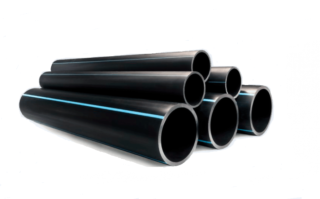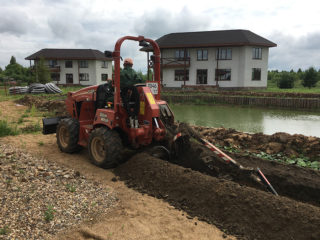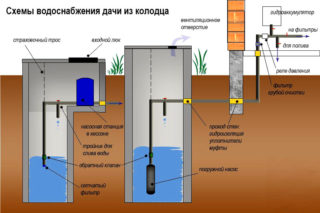Water supply in the country is a communication, without which being in a country house will be uncomfortable. Lack of sufficient water for domestic needs and watering the garden are the difficulties faced by summer residents deprived of water supply. While some owners appear on their plots only a few times over the summer, others spend a lot of time in their country houses. The way out of the situation is to conduct a water supply system in the country with your own hands from a well or other source.
Choosing a water source
Central water supply is the cheapest and most practical source of water supply for a country house. It is found in garden associations bordering on cities or large settlements. The water in it, as a rule, meets all sanitary and hygienic standards and can be used for cooking, watering the garden and other needs.
To obtain permission to connect to such a source and draw up a water supply project, you must apply with an appropriate application to the organization that is its owner - the local Vodokanal, housing and communal services.
The well is used in the absence of a central water supply in the dacha village and the impossibility of piercing a well - interstratal pressure waters lie at a very great depth. Due to its close proximity to the surface (no deeper than 12 m), well water is not always suitable for cooking and drinking, but at the same time it can be used for watering beds, water supply for a bath or shower.
A well is a narrow channel from a casing pipe pierced to a depth of over 15-20 meters with a submersible pump located in the aquifer. In the upper part, the source is fenced off with a concrete or metal well (caisson). The water from such a source is clean, suitable for drinking and household needs.
The choice of pipes for water supply

To lay the external water supply line from the water supply source to the house, low-pressure polyethylene pipes (HDPE) with a diameter of 25 mm are used with a water flow rate of less than 1.8 m3 / h or 32 mm at a flow rate of 1.8 -3.5 m3 / h.
When connecting plumbing fixtures inside the building, polypropylene pipes with an outer diameter of 20-25 mm are used. At the same time, products made of fiberglass-reinforced polypropylene are used for hot water supply, and for cold water - from simple ones.
Types of structures
Summer (temporary) water supply is a collapsible contraction, consisting of flexible hoses or polyethylene pipes laid on the soil surface, connected by couplings, tees. The water pressure in it is provided by a submersible pump or pumping station. Such a water supply system is used to organize irrigation in the garden, to supply the house with water for domestic needs during the warm season.
The winter structure is a permanently operated stationary water supply system consisting of a pipe buried to a certain depth in the ground, a water supply source, shut-off and control valves, pipes located inside the house that feed various plumbing fixtures.
Plumbing design
When drawing up a project, the minimum distances from the water supply to the nearby communications are also taken into account:
- power cables - 0.5 m;
- sewerage system -0.2 m;
- gas pipeline -1.0 m;
- telephone underground lines - 0.5 m.
The water pipe should be laid, taking into account these standards, so that in the future there will be no difficulties in repairing or replacing communications.
The owner of the communication should save the project in order to know how and where the water supply is laid and, if necessary, distinguish his tap from the neighbor's in the water well of the centralized water supply.
Installation steps
The first step in installing a water supply system in the country with your own hands is digging a trench - a long ditch from a water supply source to entering a pipe into the house. Its depth should be 0.5 m more than the level of soil freezing in winter. Trench digging depth for different regions:
- Southern regions of Russia - up to 1.2 m;
- The middle lane is 1.8-2.0 m;
- Siberia - 2.2-2.5 m.

Dig the trench manually with a bayonet shovel and scrap or with the help of special excavators with narrow buckets and trenchers. In this case, the fertile layer is thrown off on one side of the ditch, and the rest of the breed on the other.
A pipe is laid at the bottom of the dug trench. At the same time, they try to avoid bends and fractures of the communication, connecting it at sharp turns of the ditch with the help of special corner couplings and corners.
To conduct the water supply directly into the house, a hole is made in the foundation below the floor level using a perforator into which a piece (sleeve) of a corrugated pipe with a diameter of 100-120 mm is inserted. The pipe entering from the bottom of the trench at an angle into the foundation is insulated using heat-insulating materials made of expanded polystyrene, expanded polyethylene. They have a plumbing connection in the kitchen or bathroom. To do this, the floor of the room at the place of the pipe passage is dismantled and its end 10-15 cm long is brought in.
A double-sided polyethylene fitting (coupling) is installed on the end of the pipe brought into the house, into which a brass ball valve is screwed. When connected from the central water supply, a water meter unit is connected to the tap - a coarse filter and a meter.
Connecting the pipeline to the water supply source:
- When installing a water supply from a well, a polyethylene pipe is connected to a check valve on a submersible pump, before it is lowered into the casing.
- When the water supply pipe is powered from the pump located in the well, it is buried to the design depth, then a hole is made in the wall of the well outside (from the side of the ditch) and connected to the pump delivery hose.
- An insert into the main pipe of the central water supply is carried out by specialists of the organization of the owner of this communication.
After connecting the external supply pipe to the water supply source, the internal water supply is laid out, including the connection of cold water to the faucets, toilet bowl, water heater, and heating system. For this, a manual apparatus is used for welding polypropylene pipes with the necessary nozzles.
The hot heating element of the soldering iron for polypropylene pipes heats up to 300 degrees.
In addition to the indicated points of water intake, an additional pipe with a tap is also brought out to the street, which serves for watering the garden and vegetable garden.










